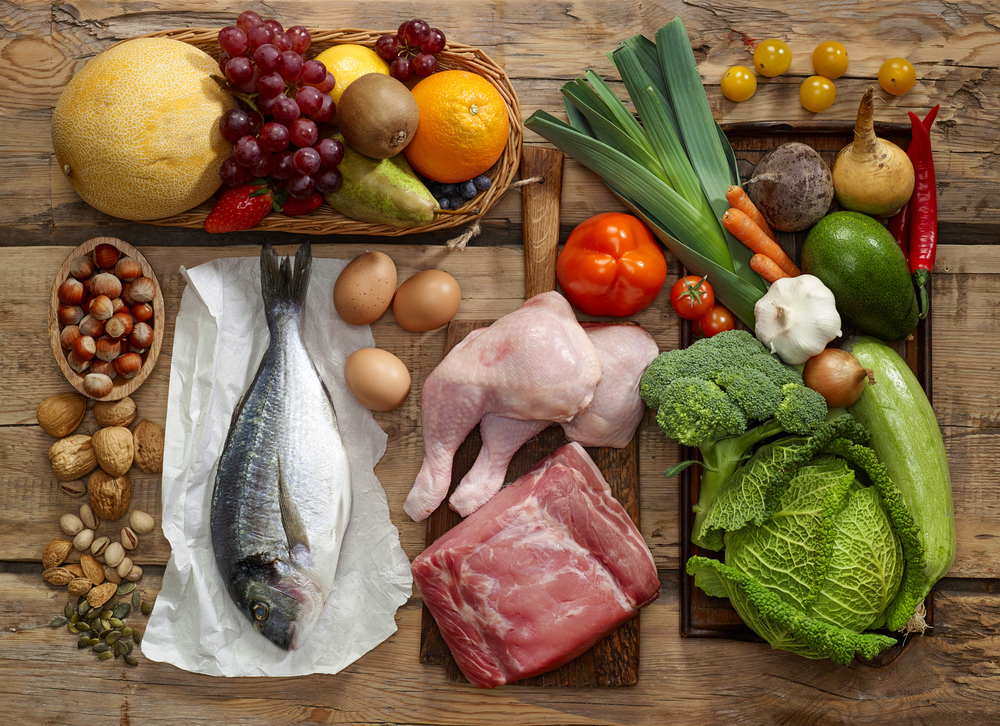Food composition refers to the individual foods you eat and their given nutrition. Among the other aspects of your fitness diet, it ranks fourth in importance (after calorie balance, macronutrients and meal timing).
You might ask yourself why this diet aspect is so low on the list. Don’t fitness gurus always tell you that it’s super important to eat certain foods and not others. For example, you often hear claims that there are special weight loss foods that will accelerate your metabolism and make fat loss that much easier. So why is food composition only in fourth place?
There are two reasons for this: First, when it comes to meal planning for fitness, meaning your goals are to lose weight, gain muscle or both, food composition really is a lot less important than people think. As long as you follow the guidelines I showed you regarding calorie consumption and macronutrient intake you will pretty much be guaranteed to reach your goals.
What this means is that you consume enough protein is a lot more important than if this protein comes from an egg or a piece of meat. Our bodies are very intelligent organisms and can handle a wide variety of food sources.
Second, when it comes to being healthy and consuming nutrient-rich meals, there are differences between different foods, of course. This is why I have another series of posts dedicated to only healthy dieting. In it, I go into more detail of how individual foods affect your health.
For now, let’s stick with what’s important for meal planning. And here the truth is that your food composition will have only a minor impact on your results. Still, I believe you should know the differences in the different sources of protein, carbs and fat. Let’s start with protein.
Protein composition
Protein composition or protein quality can be measured in a number of ways. Most often you will hear the concept of bioavailability, which describes what percentage of the protein that you consume is actually absorbed into the bloodstream.
Another indicator of protein quality considers how much of the protein is composed of essential amino acids (which are those your body cannot make itself) and how much of the protein is composed of non-essential amino acids (which are those your body can make itself). Obviously, sources that are rich in essential amino acids are of higher quality in this sense.
In general, protein quality ranks from animal sources to plant sources. Here is a short list of common foods ranked by their protein quality according to the concepts I just mentioned, starting with the most quality sources first.
Whey Protein
(Cooked) Eggs
Beef and Pork
Chicken
Fish and Seafood
Soy Protein and Quinoa
Complementary Plant Sources (e.g. beans and rice)
Isolated Plant Sources (e.g. nuts or whole grains)
What this means is that all things equal your improvements in body composition will be better if the proteins higher on the list predominate in your diet over the proteins lower on the list. But, and this is a big but, don’t go out and buy buckets full of whey protein powder while consuming nothing else.
First of all the differences between the foods are very small and will make up only a few percent of diet success at the most. Second, there is nothing worse for your physical and mental health that a completely one-sided diet. Even though nuts, for example, aren’t the highest quality source of protein, they are a great source of healthy fats and micronutrients.
The same goes for other plant-based proteins or fish and seafood. This also means that vegetarian athletes will see great results as long as they make sure to get their protein from a variety of plant sources to ensure they get all essential amino acids through their diet.
Carbohydrate composition
Just like protein composition, carbohydrate composition can refer to several concepts. The most common is the glycemic index. In its simplest form, the glycemic index is a measure of both how fast a food raises blood glucose levels, and how much it elevates insulin levels.
This measure is generally applied to carbohydrates and ranks them from 0 to 100. The faster a carb is absorbed and the larger its effect on insulin, the closer it will be to 100. Slower absorbing and digesting carbs on the other hand will be closer to zero.
Here is a short list of common carbs and their GI ratings:
Dextrose Powder 100
Honey 87
Bran Flakes 74
White Bread 70
Orange Juice 57
Soy Milk 44
Most Beans 20 – 40
Apples 39
Tomatoes 38
Carrots 35
Peanuts 13
Now, just as with protein quality the glycemic index comes with a big “but”. Here is the problem: GI rankings are based on the glycemic effects of specific foods that are consumed isolated and fasted state.
That means unless you eat first thing in the morning or after a long fast, you’ll never be consuming your carbohydrates in a fasted state. And even then, a typical fitness meal plan always combines carbohydrates with fats and proteins.
Since fiber and fat slow down digestion and absorption, they will lower the glycemic index of the entire meal. But even if you did consume a high glycemic carbohydrate source alone and in a fasted state, it still won’t affect your health negatively.
Unless you are a diabetic or have a pre-existing health condition, our bodies are very good at keeping blood sugar levels and insulin levels within a healthy range. This applies especially to people who regularly exercise.
What this means is that even though the GI index is a nice theoretic concept, in real-world scenarios it’s really not as an important as many people make it out to be. So instead of comparing “fast carbs” and “slow carbs” here is what you should focus on.
First, get the majority of your carb intake (80-90%) from high fiber, minimally processed sources. This includes foods such as oatmeal, rice (brown or white), potatoes, whole grain pasta, fruits and vegetables. Second, consume your carbs as part of a complete meal with protein and healthy fats.
As long as you do these two things you will be fine and there’s no need to go crazy about carb composition.
Fat Composition
For your fitness goals, fat composition will be even less important that carb and protein composition. Nonetheless, consuming the right kinds of fats and staying away from others will make a big difference in your overall health.
As you probably know, fats can be split into two main categories: Saturated and Unsaturated. These two can further be broken down into subcategories: Monounsaturated, polyunsaturated, healthy saturated, staurated and trans fats.
You want to make sure to reach your daily fat intake through mainly monounsaturated fats such as avocados, nuts and olive oil. Polyunsaturated fats, which include many vegetable oils and healthy saturated fats (e.g. from coconut oil or grass-fed beef) also have their place in a well-rounded diet. So do fats from dairy products, but consumed in small to normal amounts.
What you should limit or avoid though are trans fats which can be found in highly processed foods such as junk food. They have been shown to not only have negative effects of muscle growth and fat loss, but are also bad for your overall health.



